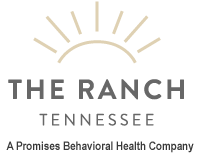Anyone who’s done much web-surfing seeking information about treatment options for addictions or other psychiatric diagnoses has seen these three little letters: CBT. Cognitive Behavioral Therapy, or CBT, is a treatment modality that is widely used and has gained much respect and acceptance by both treatment professionals and clients, mostly due to its reputation for effectiveness. CBT is easy for professionals to learn and use, and easy for clients to understand, although somewhat more challenging to integrate into a practice. Where did it come from? CBT is a marriage of cognitive (i.e. thinking) therapy and behavioral therapy. Behavioral approaches, such as behavior modification, were developed by such therapists as B.F. Skinner, working from Pavlov’s research on stimulus and response. These theorists worked from the perspective that behavior can be learned and that rewards and consequences, or to use their language, positive and negative reinforcements, can have a profound influence on behavior. Cognitive theory has to do with becoming aware of thoughts and the influence thoughts have upon emotions. While trivialized, perhaps, by oversimplifying these ideas into notions of “positive thinking,” cognitive approaches focus on noticing thoughts, and changing negative or unhealthy thought patterns. This would include becoming aware of beliefs and expectations, as well as assumptions and faulty logic. A key component of this type of therapy involves learning to challenge your thoughts and reconsider your assumptions or beliefs, uncovering logical fallacies or hidden agendas in your thinking. The Nuts and Bolts of CBT So how does it actually work? Therapists will often help clients learn to use CBT by having them engage in written exercises, although these exercises can also be done aloud in group settings. A stressful or “triggering” situation is presented: for example, a parent might describe a difficult morning getting his child to school on time. Details such as how getting dressed and eating breakfast happened would be noted, and conversations between the father and child would also be noted. This would be written up in one column entitled “The Event. The next column to be filled in or discussed is entitled “thoughts.” The client is encouraged to identify every thought they had while they event played out. In a group setting, group members can help here, offering what they might have thought if they were in the same situation. In the above example, typical thoughts might include “if my kid misses the bus, I’ll end up being late for work,” or “my kid is dragging her feet on purpose because she knows I have today off.” As the event progresses, thoughts may escalate in intensity along the following lines: “Julie is really making me angry” or “I’m so angry I have to leave the room.” After generating an exhaustive list of thoughts from beginning to end of the event, and exploring how thoughts change as the event progresses, the therapist would then invite the client or group to identify emotions that come up as the event unfolds. In this example, the father may identify anger, worry/anxiety, frustration, and even despair depending upon how many times this particular event has played out over the past few weeks and how great the danger of being fired for being late to work may be. The final column to be filled out in this process is labeled “Behavior.” After looking at an event in terms of what went through your mind and then how you felt, the therapist guides you through a step-by-step recounting of what you did. The purpose of this is to help clients see that behavior arises out of a cognitive and emotional context. Choices or options regarding what to do in any given stressful event are colored by what you have already told yourself about that event, and what you believe about it (in this example, the father may have told himself “I’m going to be late” and then believed “I’m at risk of getting written up”). These thoughts give rise to strong emotions: fear, rage, despair are often reported by the end of a stressful or triggering incident. It is no wonder troubling behaviors emerge from these types of emotional and cognitive contexts. But How Can You Change Your Thoughts? Our thoughts seem so intrinsic to us; it may be tough to conceptualize simply changing thoughts. You start slowly, with guidance from a supportive group, or a therapist. Humans think in words, so the wording of thoughts becomes important as you seek to make changes. Some of the classic interventions around wording in CBT include looking at the use of absolutes, such as “always” or “never.” Others involve becoming aware of mental filters, such as discounting or downplaying positives. Uncovering underlying beliefs (for example, “No one likes me” is an underlying belief that would lead to thinking errors) and then challenging them is an important aspect of this process. While anyone can use the “grid” described above, where you write down an event and then the thoughts, feelings and behaviors that occurred subsequently, as you start noticing the underlying beliefs that feed these irrational and negative beliefs, it is strongly recommended that you use the positive and supportive presence of a therapist and/or a sponsor and a strong self help group. Doing the hard work of looking critically at your own thoughts, beliefs, emotions, and behavior can be empowering and profoundly healing. CBT can be a helpful tool to employ in this journey.
Call for Immediate Help:1.844.876.7680
